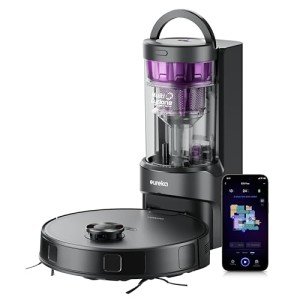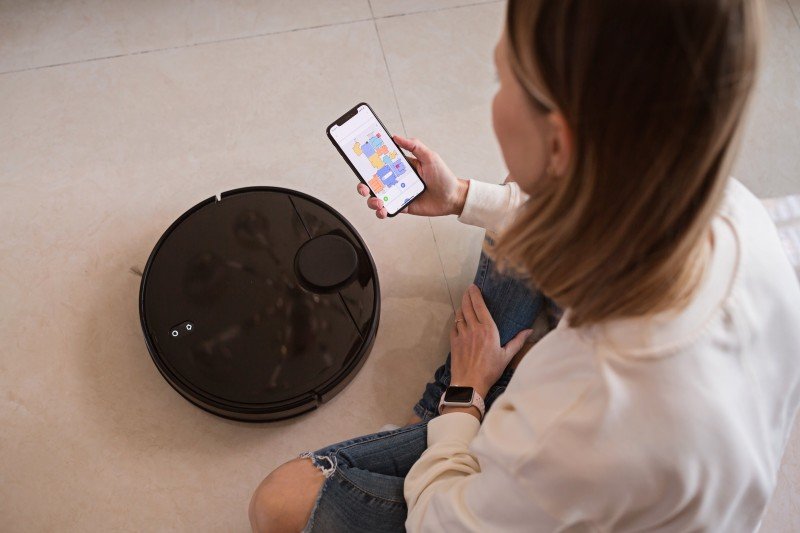
Automatic Vacuum
Add a review FollowOverview
-
Founded Date October 30, 1955
-
Sectors Education
-
Posted Jobs 0
-
Viewed 19
Company Description
What’s The Job Market For Automatic Hoover Robot Professionals?
The Rise of Automatic Hoover Robots: Revolutionizing Home Cleaning
In today’s busy world, technology continues to reshape the method we live and work. Among the innovations making a considerable effect on families are automatic hoover robots, typically described merely as robot vacuums. These intelligent cleaning makers assure not only convenience however also efficiency in keeping tidy living spaces. This article checks out the development, advantages, constraints, and future of automatic hoover robots.
The Evolution of Automatic Hoover Robots
The idea of automated cleaning gadgets dates back to the early 20th century, but it wasn’t until the advent of sophisticated robotics, sensing units, and expert system that robot vacuums ended up being viable. The following table shows crucial milestones in the advancement of automatic hoover robots:

| Year | Milestone |
|---|---|
| 1996 | The very first automatic vacuum is introduced by Electrolux. |
| 2002 | iRobot launches the Roomba, a consumer-grade robot vacuum. |
| 2010 | Intro of sophisticated mapping technology and crash sensors. |
| 2016 | Robotic vacuums begin integrating with smart home systems. |
| 2020 | Increased adoption of AI and machine knowing for much better cleaning algorithms. |
How Automatic Hoover Robots Work
Automatic hoover robots run using a combination of sensors and algorithms to navigate family spaces. Below are essential components that add to the functionality of these devices:
- Sensors: Lidar (light detection and ranging), infrared, and cliff sensing units help the robot map the area and avoid obstacles.
- Mapping Technology: Many models now offer sophisticated mapping capabilities, making it possible for effective navigation through spaces, identifying high-traffic areas, and keeping in mind the layout of your home.
- Cleaning Modes: Most robot vacuums feature multiple cleaning modes, consisting of spot cleaning, edge cleaning, and organized navigation.
- App Connectivity: Many modern-day styles enable control through mobile phone apps, making it possible for users to schedule cleansings and customize settings remotely.
Benefits of Automatic Hoover Robots
Automatic hoover robots offer a myriad of advantages, making them appealing to a substantial variety of consumers. Here are some compelling benefits:
- Time-Saving: Users can arrange cleanings and multitask while the robot does the work.
- Constant Cleaning: Regularly scheduled cleanings ensure that homes remain tidy.
- Availability: Robots can clean hard-to-reach areas like under furnishings without manual effort.
- Smart Features: Integration with smart home systems allows for voice control and more advanced scheduling alternatives.
Limitations of Automatic Hoover Robots
Regardless of their benefits, automatic hoover robots have particular drawbacks that users need to think about:
- Battery Life: Most robot vacuums need charging, which can interrupt cleaning cycles.
- Suction Power: While effective for light debris, they might have problem with deeply embedded dirt or thick carpets.
- Maintenance: Regular cleaning of brushes and filters is necessary to keep efficiency.
- Expense: High-end designs can be costly, which might be a barrier for some consumers.
Future of Automatic Hoover Robots
As innovation continues to advance, there are several exciting potential customers for automatic hoover robots. Here’s what to anticipate in the coming years:
- Enhanced AI: Improved device learning algorithms could enable robots to adjust their cleaning strategies based upon the specific design and dirt levels in a home.
- Multi-Functionality: Future designs may not only vacuum but likewise mop, disinfect surfaces, or perhaps offer real-time ecological monitoring.
- Combination with Home Automation: Increased interoperability with different smart home systems will likely boost control and performance.
- Sustainability: Future variations might concentrate on environmentally friendly features, including biodegradable components and energy-efficient operations.
Often Asked Questions (FAQs)
1. How often should I run my automatic hoover robot?
- It largely depends upon your way of life, but running it a few times per week can help maintain a clean home, especially in high-traffic locations.
2. Can I use a robot vacuum on carpets?
- Lots of robot vacuums are developed to deal with carpets, however performance may vary depending upon the density and density. Constantly examine the manufacturer’s requirements.
3. Do robot vacuums work well with animal hair?
- Many modern-day models are geared up with brushes and strong suction power particularly designed to deal with family pet hair effectively.
4. Can I set up cleanings from another location?
- Yes, lots of robot vacuums include mobile phone apps that permit users to set up cleansings and control features from anywhere.
5. How do I preserve my robot vacuum?
- Routinely clean the brushes, empty the dustbin, and change filters according to the producer’s suggestions to ensure optimum efficiency.
Automatic hoover robots represent a considerable shift in the way homes approach cleaning. By integrating innovative innovation with easy to use functions, these gadgets not just supply benefit however also boost performance in preserving clean living areas. As developments continue, the future of automatic hoover robots looks appealing, possibly providing a lot more intelligent options for modern-day homes.
In a world where time is of the essence, the function of technology in home care is becoming increasingly crucial, making automatic hoover robots an exceptional financial investment for those wanting to simplify their lives while guaranteeing cleanliness.

